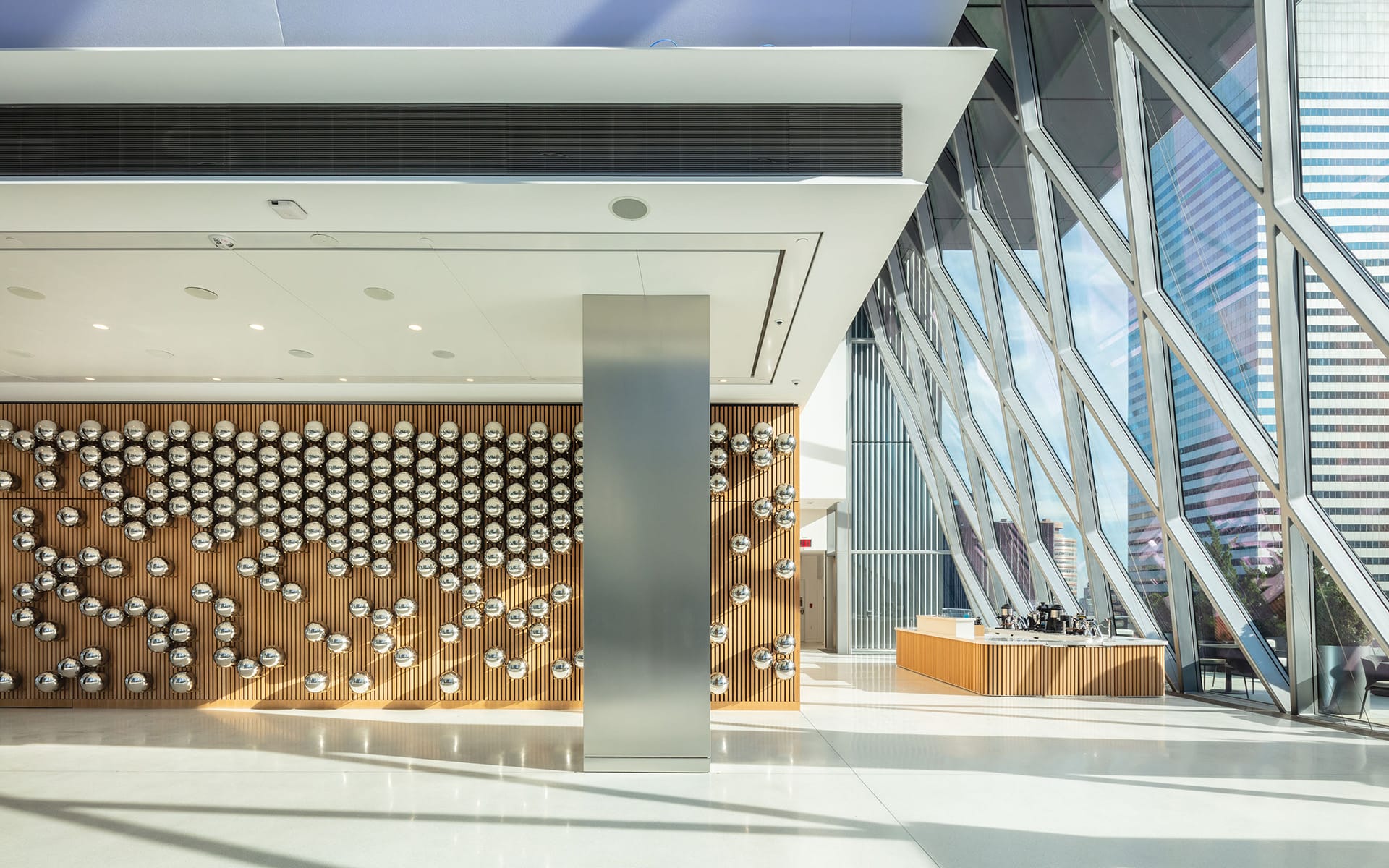Creative Mind: Norman Foster Completes the World’s Most Glamorous Office Tower
Marrying high-tech innovations with cutting-edge sustainability, the Pritzker Prize winner will be the subject of a major retrospective at the Centre Pompidou in Paris

The virtues of strength, beauty, and utility—espoused by ancient Roman architect Vitruvius as essential for well-designed buildings—have found a modern champion in Norman Foster, whose iconic structures never fail to encapsulate all three. “The story of architecture for me is the history of technological advances to improve the quality of our lives,” explains the Foster + Partners founder. “This starts with material needs and progresses to the spiritual dimension.”
This philosophy, which marries high-tech innovations with cutting-edge sustainability, will be on full display in May, when the Pritzker Prize winner opens a major retrospective at the Centre Pompidou in Paris that marks his 60th year in practice. An overview of nearly 100 projects, the sweeping exhibition signifies anything but a career cap: Foster has a slew of skyline-shaping endeavors currently under construction around the world, from a sprawling international airport in Kuwait City to a lush urban resort in Beverly Hills. He also recently debuted Manhattan’s long-awaited 425 Park Avenue, a 47-story tower clad in a medley of glass and steel with striking diagrid portions that recall his signature exterior for the city’s Hearst Tower.
See below for Galerie’s exclusive interview with Foster:


What were the chief design influences behind 425 Park?
One of the strongest influences on 425 Park Avenue is Park Avenue itself. As a city space it is unique in the way that the facades are virtually unbroken except for the cross streets, giving it a strong sense of identity for those who walk or drive along its length. However, the manner in which this urban order blossoms into skyscrapers to mark the skyline above distinguishes it from similar sized boulevards elsewhere. Respecting the integrity of the avenue, but then setting back to rise high, was rooted in this local DNA as well as the classic rectangular grid of New York, hence the four square geometry of the tower on plan. More subliminal as an influence is the historic association of polished stainless steel with certain iconic towers in Manhattan. To summarise, all of these add up to the influence of the place.
Less tangible are the other forces behind the design. Notable were the civic ambitions of David Levinson and his Partner Rob Lapidus. They aimed for the highest standards with a genuine desire to continue the tradition set by nearby monuments to the history of the Modern Movement -towers such as the Seagram Building of Mies van der Rohe, the Lever House of Gordon Bunshaft and the CBS Headquarters of Eero Saarinen.

What does the diagrid express to you?
The diagrid which marks the two triple-height set backs as the tower ascends are an integral part of the total structure. Here, the clear expression of the structure is the architecture, and the architecture is the structure. Triangulating the structure at the critical junctions maximises its rigidity with the minimum amount of steel. This performance-driven approach has a visual benefit because the diagrid adds to the building’s unique sense of identity and order.

Can you describe your creative process and whether it has evolved?
The story of architecture for me is the history of technological advances to improve the quality of our lives – technology as a means to social ends. This starts with material needs and progresses to the spiritual dimension. It is closely aligned with nature, not just resisting the forces of nature but harnessing the potential of natural light, fresh air, greenery and views. The reference in the question to evolution is a reminder that, in the past, we believed subjectively that these attributes were good for you. Since then, through research, it has been scientifically proven that they are, indeed, beneficial and these findings have been fed back into 425 Park with consequent high ratings, not just for sustainability, but for the health and wellbeing of its occupants. An appreciation of history and a sense of place are also embedded in the design philosophy as was revealed by the first question. Perhaps we could summarise by saying that the creative process embraces and integrates these and many other factors in the pursuit of achieving an optimum design. I am reminded of the first century Roman architect, Vitruvius Pollio, and his definition of the three elements necessary for a well designed building, which translate as commodity, firmness and delight or utility, strength and beauty.
What are you most excited about in 2023?
I am looking forward to seeing those projects that are now on site coming to fruition this year, as well as engaging on new projects which, for the moment, are unknown.
2023 marks my 60th year in practice and coincides with a major retrospective of our works, opening in May, at the Pompidou in Paris. Subtitled Sustainable Futures, it traces our sustainable agenda rooted in the 1960s coupled to the concept of designing to anticipate change in the future.
It is difficult to separate my role as a practicing architect from the process of continuing to learn from my work with students through the educational programmes at the Norman Foster Foundation and my involvement with mayors from around the world through my role as Advocate for the United Nations Forum of Mayors. Finally, I am excited about continuing to promote the cause of clean energy, especially new generation nuclear, which I believe is at the heart of combatting global warming.
A version of this article first appeared in print in our 2023 Spring Issue under the headline “Creative Minds.” Subscribe to the magazine.
